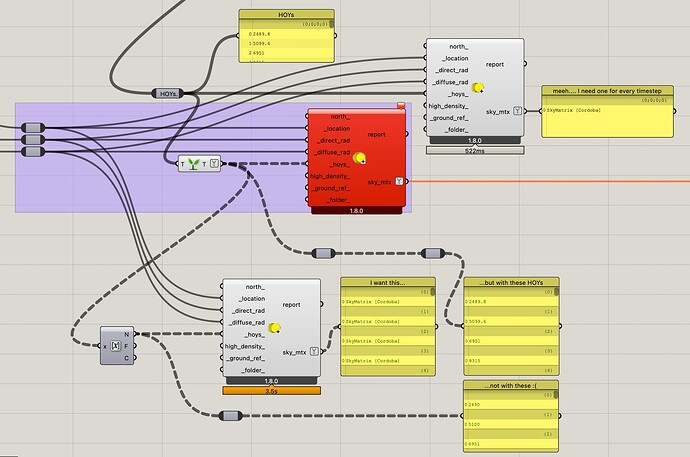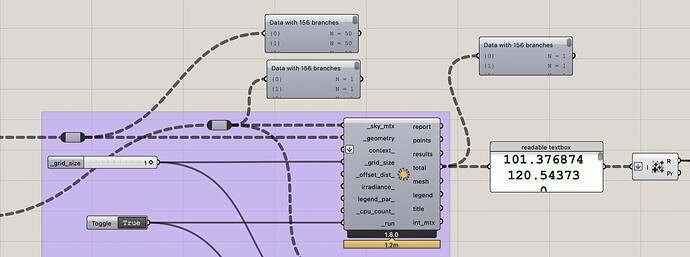Hi Team,
A)
I might have found another version of the no-float-allowed-bug in the Cumulative_Sky_Matrix component. As shown in the image, it allows me to use HOYs as floats, as long as they are in a flattened list and HOYs as INT, when grafted.
What I would like to have is one sky mMatrix for every time step, as i’m changing the geometry based on the time. My solution was to graft the HOYs and thus hopefully receiving a sky matrix for every hour - which seems to work.
Now I’m getting curious, trying to bump up the resolution in time, by setting the timestep in the LB_Analysis_Period component to 4,5 or 6. Now the Cumulative_Sky_Matrix component breaks with “1. Solution exception:Data Collection must include at least one value”.
Since there have been a few int-float-bugs in the past (as a quick forum-search suggests), I’m guessing this is another variant.
Please correct me if I’m wrong!
B)
By the way, I’m building some kind of solar tracker yield estimation, where a few surfs are oriented depending on the sun vector (conveniently given per HOY by the LB Sunpath component). With the hourly geometry orientation plus an hourly (hopefully!?) sky matrix, I’m calculating the accumulated energy on my surfs with the LB incident radiation component. As mentioned above, grafted for every geometry+time-step pair, so the result is also per pair and mass-added in post.
Since I’m a bleeding beginner with Ladybug, If anybody sees some gross misunderstanding of the tools here, please let me know!
Plus, if somebody has a better Idea how to get the irradiation data from the weather file in hourly or less time-steps, also, any hint is appreciated!
In that case I could “simply” multiply the current, specific irradiation (per m^2) with the normal-to-sunvec-exposed surf areas and have more transparency about what’s happening in the code than going through the sky matrix, which I haven’t understood (yet) ![]()
Thanks!

